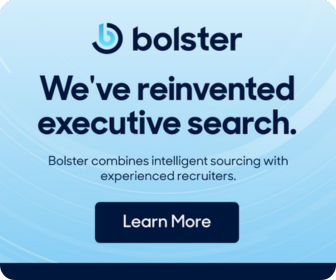
In most startups, one of the founders is the first salesperson — often out of necessity as much as passion. But as startups scale they add sales reps or maybe some form of a Sales Manager once there are more than a couple of reps. But how do you know when to bring on a senior sales leader? Too soon and you have a very expensive employee, too late and your sales reps are creating their own processes and approaches. As a CEO there are several telltale signs that you need to hire a CRO, for example:
- You wake up in the middle of the night concerned about HOW you’re going to make this quarter’s number. You have no clue about what the levers are, or what the pipeline/forecast details are, to get there.
- You are spending too much of your own time managing individual deals and pricing, or teaching individual reps how to get jobs done.
- Your Board asks you if you’re ready to step on the gas and scale your revenue engine and you don’t have a great answer and aren’t sure how to get to one.
But don’t wait until you’re waking up in the middle of the night to hire a CRO. Instead, use this simple process to build some consistency in your sales team and set yourself up to scale rapidly when the time comes.
Building a Sales Team: From “Whiteboard” to “PDF”
There is a framework we learned from one of our original investors at Return Path, Greg Sands. Greg always talked about the evolution of an enterprise selling process as going from “selling on whiteboard, to PowerPoint, to PDF.” A “Whiteboard” approach to sales is one that is exploratory and conceptual. A “PowerPoint” approach is a sale that requires creativity and tailored pitches, while a “PDF” sale is a standard sale that can be taught quickly to an inexperienced sales rep and used with a high degree of predictability to all customers.
Many startups think that they need to be at the PDF stage quickly but as a startup your goal should not be to deliver a polished, buttoned down and refined final PDF to customers. Your goal should be to start with a mindset of discovery.
Whiteboard Sales Approach
Your initial sales team (maybe the CEO and/or Head of Product) should go to a prospect’s office and literally use a whiteboard, drawing things out (drawing charts, and frameworks, and circles, and arrows, and exclamation points), while you try to understand your potential customer’s problem. You’re creating this with the client because you don’t have a deck yet, much less a PDF. It can be very interactive and engaging selling on a whiteboard and using that very intimate moment to try to develop the right story for your product.
Powerpoint Sales Approach
As you evolve and grow, chances are you’ll have a sales deck and a pitch because you won’t be discovering what the customer needs. You’ll have very refined (and tested) ideas about their needs and maybe you’ll even have customer segments. But a caution here is that what could (and often does) happen is that your deck, your pitch, get modified along the way — for every single pitch. So, if you have four salespeople, each of them has a different version on their laptop, and there’s probably no central organizing body yet that has thought about what the tone and tenor of the brand should be.
This is the “Selling with PowerPoint” stage and it’s here that good, clever, senior, business development-oriented salespeople are most successful because they will create custom pitches for each client based on their learned history of what has and has not worked in other places. You are still miles away from being a sales machine and what you need is a level of sophistication and market understanding that enables you to get to a PDF presentation.
PDF Sales Approach
A PDF is something that’s complete, that can’t be modified or altered, and it ensures that everyone’s speaking the same language. At this point you have the kind of consistency and message and positioning that enable you to be repeatable and scalable. You can hire a new, junior sales rep, train them for a few weeks, hand them a prospect list and a pdf, and have a really good sense of that person’s likely productivity.
Of course, selling by whiteboard — and even PowerPoint — is sufficient to a point in time but if you’re thinking about unleashing your product on a massive scale, then you have to get to the point where you have a very smooth presentation and message that you know resonates with the audience.
You might be thinking that you can get your sales team from whiteboard to PDF quickly, that it’s a matter of understanding the process and then executing it. But the reality is that there is no quick way to get from whiteboard to PDF and it’s not a linear process. You can’t put into your business plan that you’ll spend the first six months selling with whiteboard, the next six months selling with PowerPoint, and the next six months selling with PDF. It’s much more nuanced, there’s a lot of trial and error, a lot of experimentation, and a lot of thinking and rethinking based on customer ideas and feedback. At Return Path, for example, it probably took us somewhere between five to ten years before we got from whiteboard to PDF and it was only after refining our approach and materials that we were able to build a sales machine.
Obviously, a startup can’t wait the five to ten years to hire a CRO, but even at the “Whiteboard” stage an inquisitive person, excited about your product and customers, could help build and grow a dynamic sales team… and certainly by the “PowerPoint” stage, a strong senior sales leader can make a world of difference — and drive you to the “PDF” stage.
-Matt Blumberg & Anita Absey, September 7, 2021
